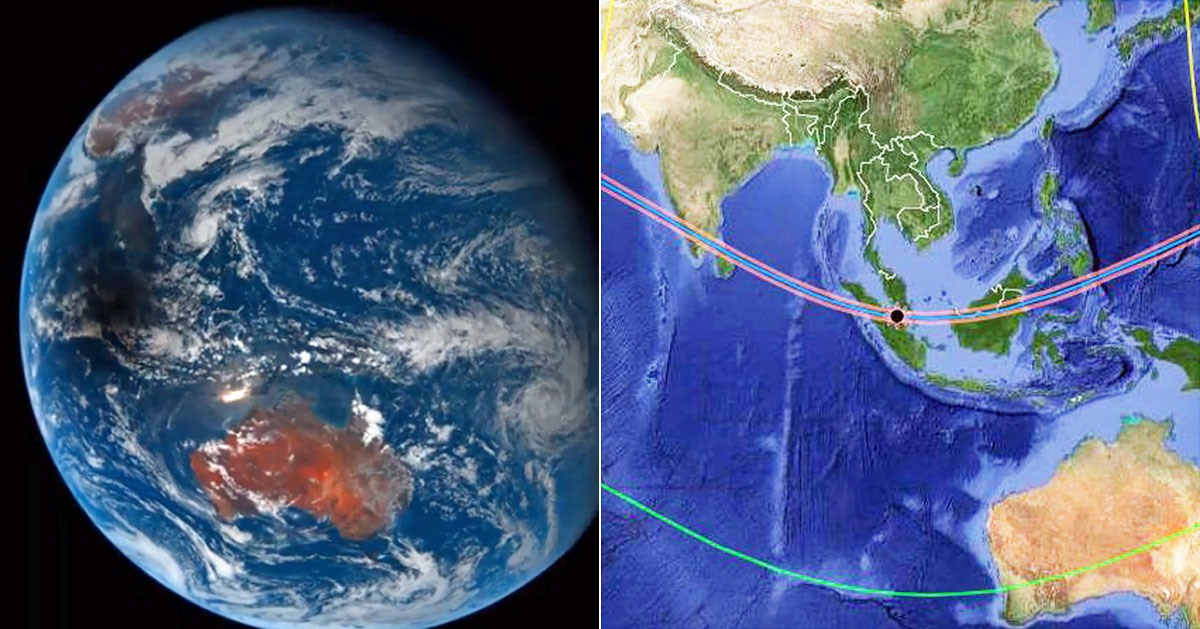Singaporeans lucked out a little this Dec. 26, 2019 as they got to witness first-hand the rare annular solar eclipse -- and the accompanying funky effects.
For the record, this celestial event was the first time in two decades it was visible in Singapore, with the next one scheduled for 2063 -- some 44 years away.
The significance of the event is even more amazing if you consider the path of the eclipse on a planetary scale.
As shot by the Himawari 8, a Japanese weather satellite, this was how narrow the path of the solar eclipse was -- and it actually crossed over Singapore (note that the orange continent is Australia):
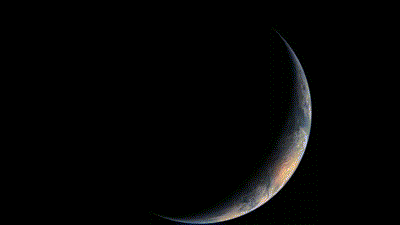
This was how the path looked like traced out, with Singapore almost dead centre represented by the black dot:
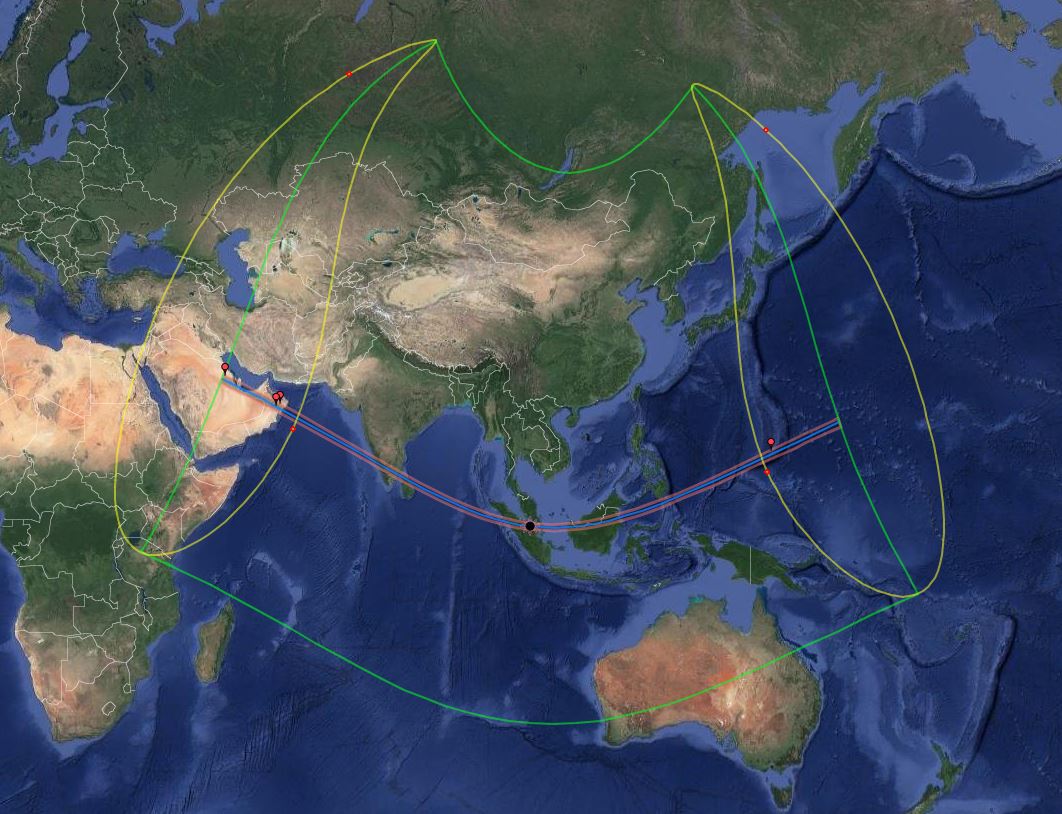 Credit: Xavier Jubier
Credit: Xavier Jubier
Or check out this 30-second video here:
The entire length of the eclipse is about 10,000km -- a distance out of a possible 40,000km circumference of the Earth.
As a result of Singapore's fortuitous location, some 94 percent of the sun was obscured when seen from here.
The outer edges of the sun was visible as a “ring of fire” as a result.
How the eclipse went
The eclipse started in the desert of eastern Saudi Arabia and then made its way into the Arabian sea.
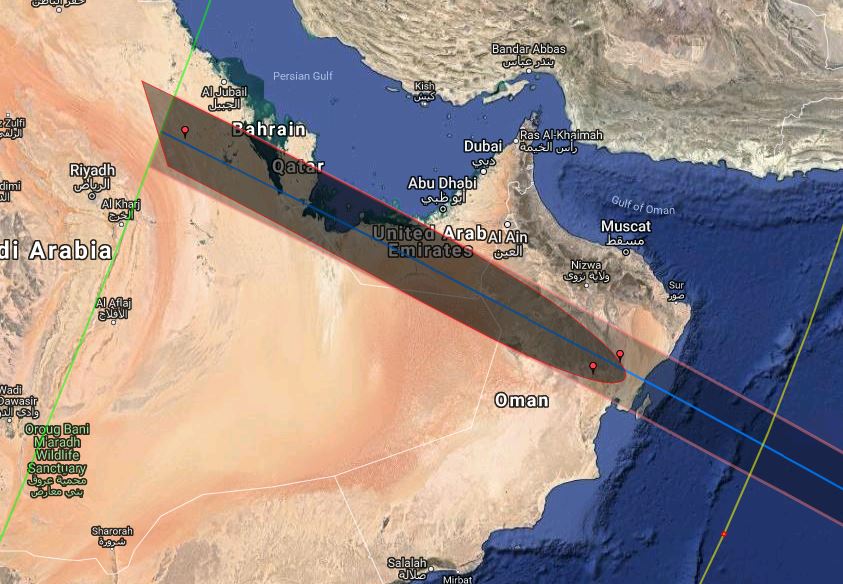
It then hit landfall as it reached the west coast of southern India and continued in a southeast direction.
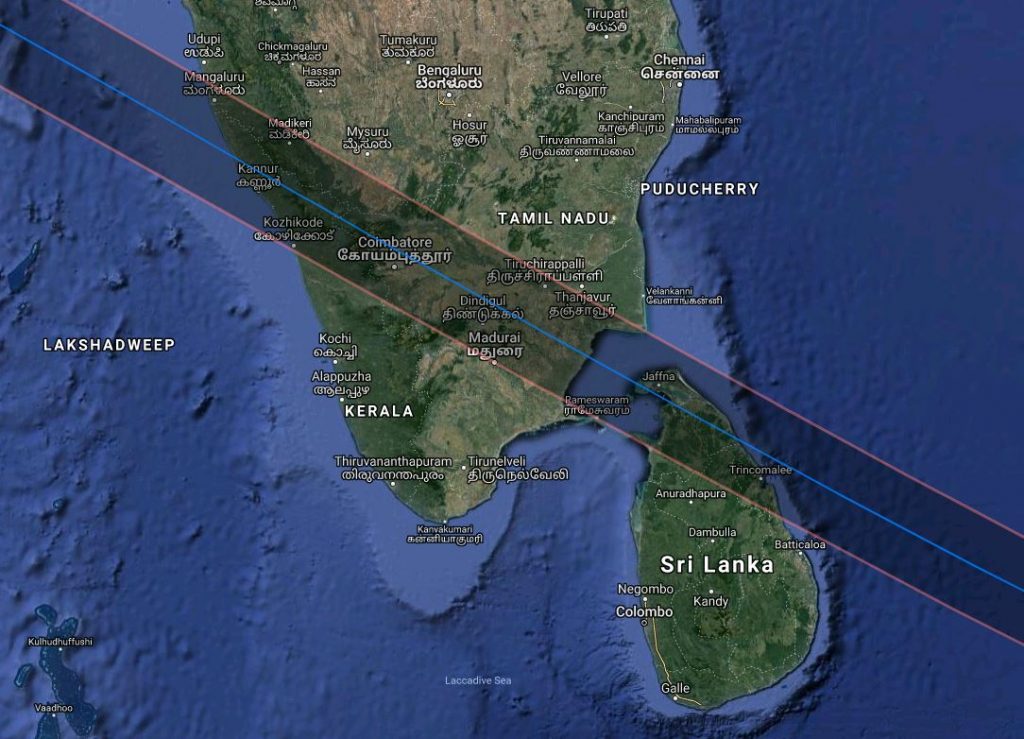
The eclipse then went eastward into the Bay of Bengal for around 1,700 kilometers, before hitting landfall on the island of Sumatra, Indonesia.
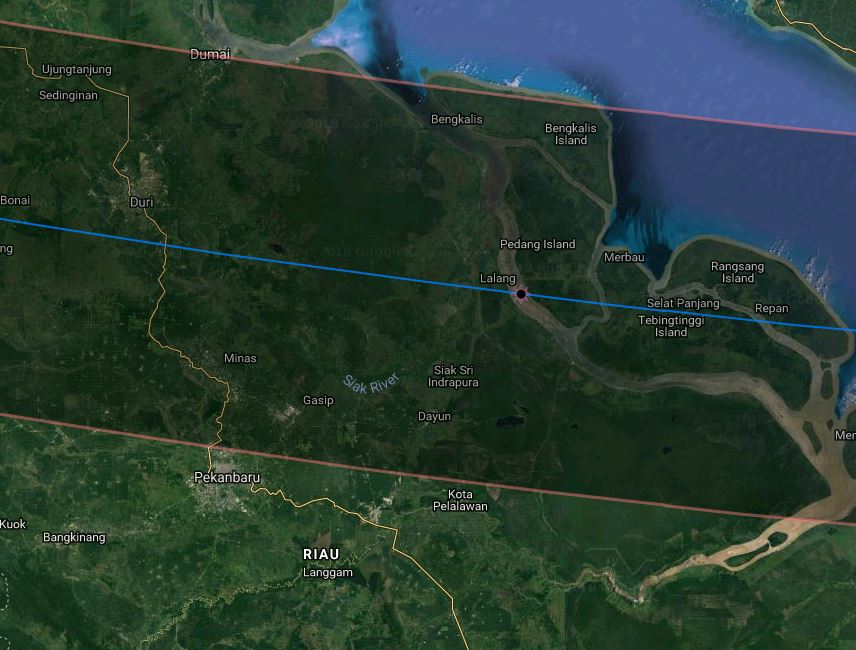
The northern tip of the path of annularity then crossed Singapore.
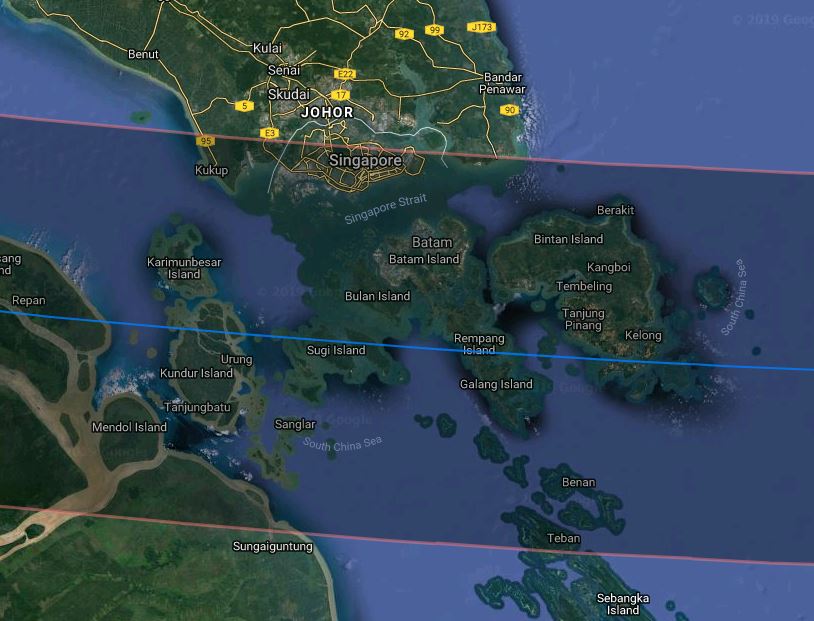
With a population of 5.6 million people, Singapore was the most heavily populated region along the annular eclipse path.
Just a few miles north and the eclipse did not reach annular phase, which meant that areas such as neighbouring Johor Bahru, and possibly Woodlands, missed it.
Meanwhile, the central line of the eclipse was some 50km to the south of Singapore along the Riau islands.
All of the Southern Islands along the Singapore Strait would have witnessed the annular solar eclipse.
So would the majority of the Riau Islands.
The eclipse lasted for about two minutes in Singapore.
What this means
Just tens of millions of people at most, out of a possible seven billion, saw the Boxing Day solar eclipse first-hand.
The fact of the matter is that people here never get to see UFOs, and Singapore's skies are suffering from perpetual urban light pollution due to our First World living, which makes regular star gazing quite impossible, while rendering the occasional meteor showers quite lame.
The super moon phenomenon several months back was pretty cool, but not quite as cool as seeing the sun lose its vitality for a bit.
So, for the full-blown sun to just dim a few notches in the middle of the afternoon, with very little cloud cover considering it is the rainy season now, was in itself a miracle of a coincidence.
Centuries and millennial ago, such occurrences would have resulted in sacrifices and some bloodletting.
These days, we can just read about it as an explainable phenomenon, with word of it getting downloaded from ether into your device, without the need to conjure magic and omens.
On the human side of things, quite a number of science teachers in Singapore finally got to see in person what they have been teaching for years in textbooks.
Really brings a tear to your eye knowing we're just on a rock hurtling through space.
If you like what you read, follow us on Facebook, Instagram, Twitter and Telegram to get the latest updates.
